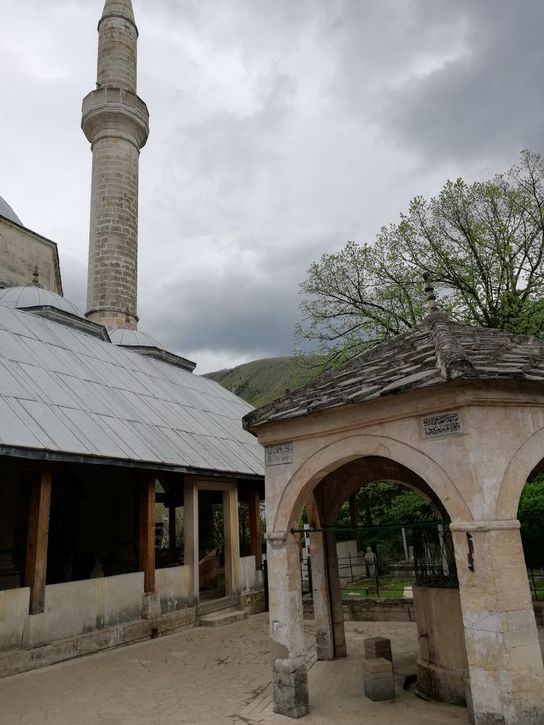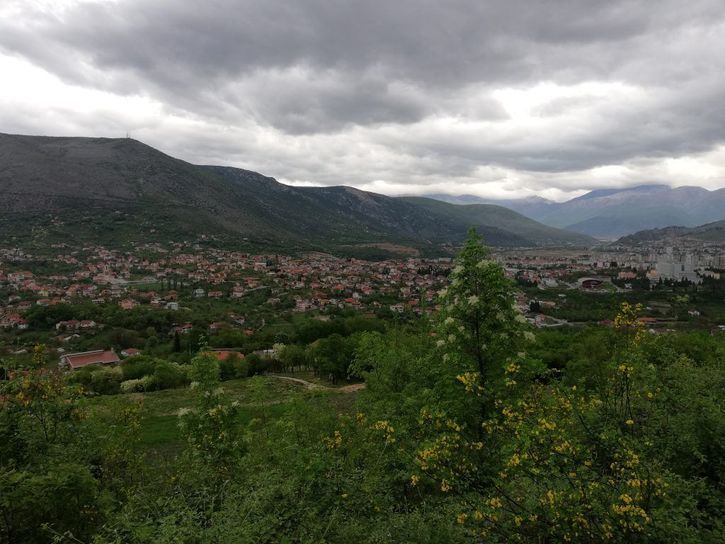
We drove from Split to Mostar on 17th April and found a nice safe (or so we thought) patch of a small road leading into the city. About 7.30 am we heard a rumbling sound getting closer and closer and, looking out of the window, saw an excavator bearing down on us. We got out pretty quickly and had breakfast. During the washing up, I took a pic of Mostar from the hill on the rod to Split, and of an apiary. Honey is a speciality of Mostar.
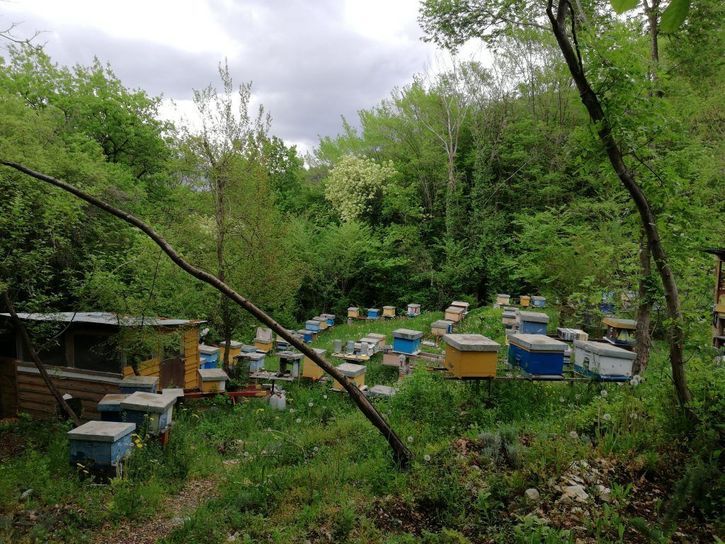
Mostar is situated on the Neretva River and is the fifth-largest city in Bosnia Herzegovina. It was named after the bridge keepers (mostari) who in the medieval times guarded the Stari Most(Old Bridge) over the Neretva. The Old Bridge, built by the Ottomans in the 16th century, is one of Bosnia and Herzegovina’s most recognizable landmarks, and is considered one of the most exemplary pieces of Islamic architecture in the Balkans.
When I first came to Mostar, the tourist industry had not heard of it, and it was a delight. Now, it is infested with tour groups, mostly East European, and the beautiful little cobbled lanes through the old city are packed with shops selling tourist tat and you cant even stop and look without somebody rushing out and saying “hello you want to buy?”. They claim that the tat is hand-made by craftsmen but the suspicion is that it is made in huge quantities in Chinese factories.
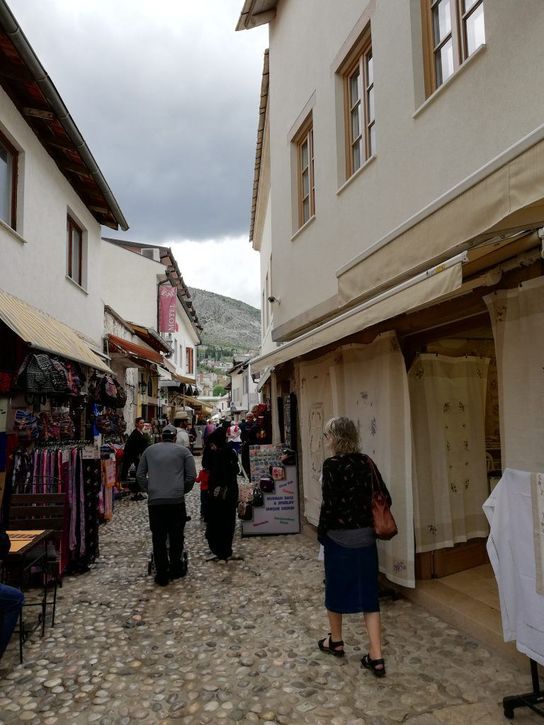
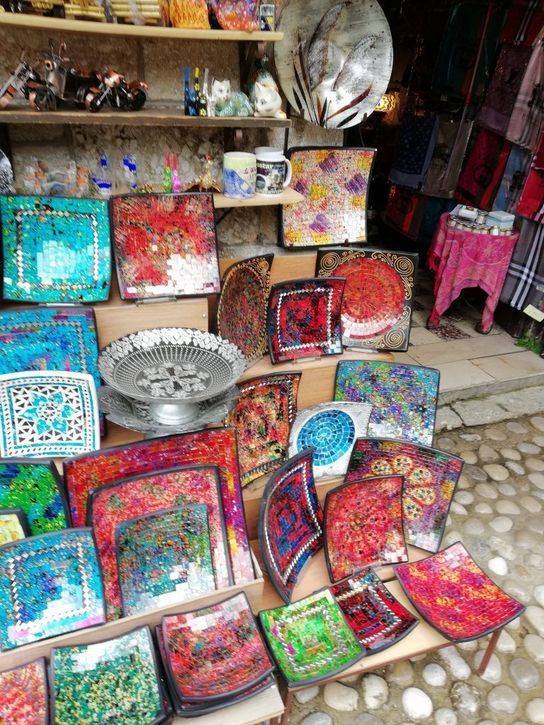
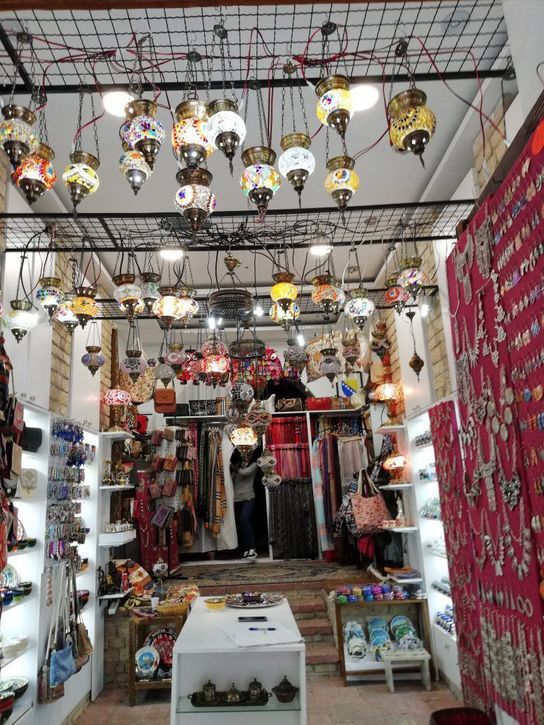
Human settlements on the river Neretva, between the Hum Hill and the Velež Mountain, have existed since prehistory, as witnessed by discoveries of fortified enceintes and cemeteries. Evidence of Roman occupation was discovered beneath the present town.
As far as medieval Mostar goes, although the Christian basilicas of late antiquity remained in use, few historical sources were preserved and not much is known about this period. The name of Mostar was first mentioned in a document dating from 1474, taking its name from the bridge-keepers (mostari); this refers to the existence of a wooden bridge from the market on the left bank of the river which was used by traders, soldiers, and other travelers. During this time it was also the seat of a kadiluk (district with a regional judge). Since Mostar was on the trade route between the Adriatic and the mineral-rich regions of central Bosnia, the settlement began to spread to the right bank of the river.
The town was fortified between the years 1520 and 1566, and the wooden bridge was rebuilt in stone.The stone bridge, the Old Bridge (Stari Most), was erected in 1566 on the orders of Sultan Suleiman the Magnificent, 92 feet long and 66 feet high, quickly became a wonder in its own time. Later becoming the city’s symbol, the Old Bridge is one of the most important structures of the Ottoman era and perhaps Bosnia’s most recognizable architectural piece, and was designed by Mimar Hayruddin, a student and apprentice of the Ottoman architect Mimar Sinan.
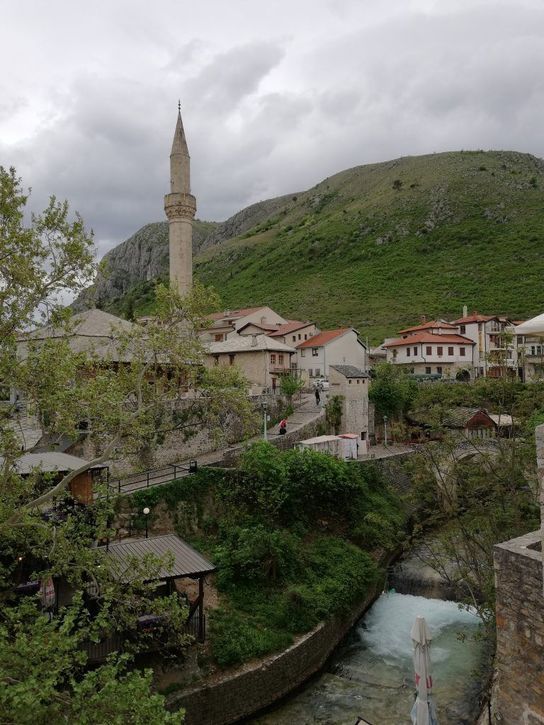
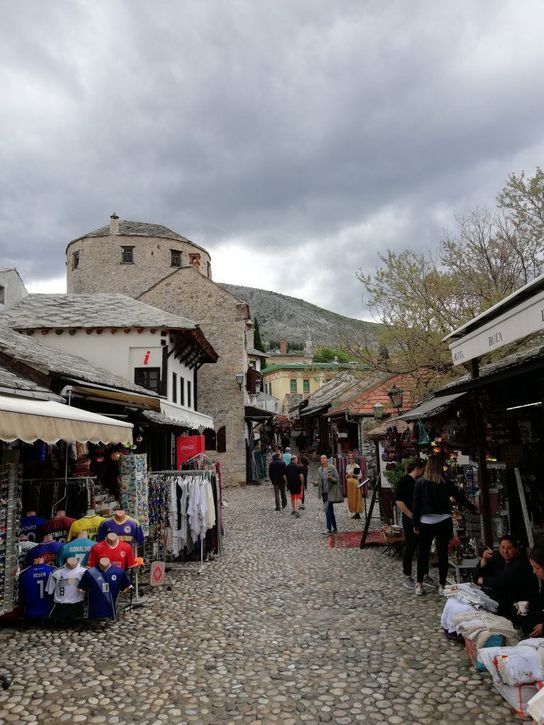
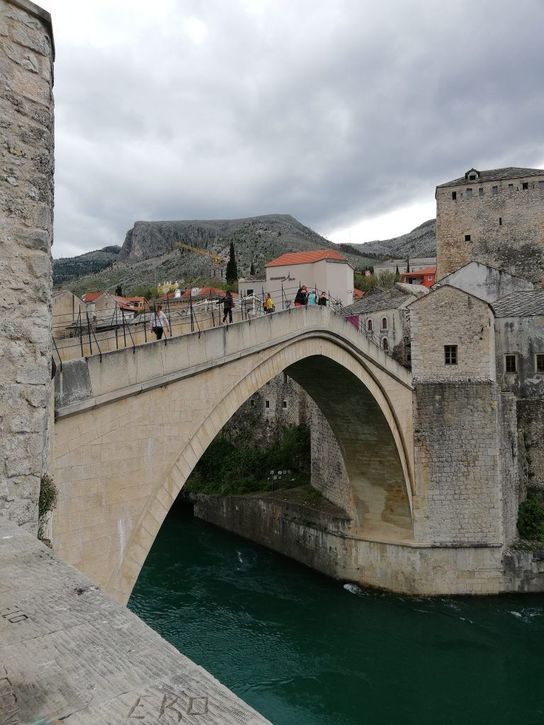
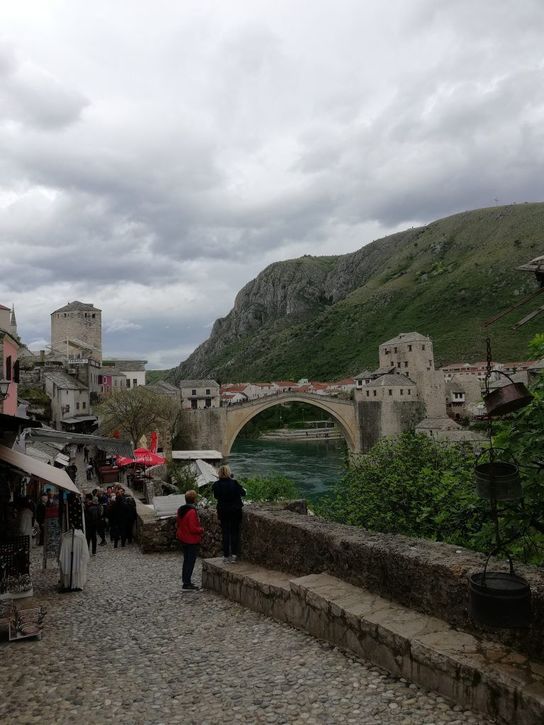
Throughout late 1992, tensions between Croats and Bosniaks (Bosnian moslems) increased in Mostar. In early 1993 the Croat–Bosniak War escalated and by mid-April 1993 Mostar had become a divided city with the western part dominated by Croatian forces and the eastern part where the Army of the Republic of Bosnia and Herzegovina (ARBiH) was largely concentrated. Fighting broke out in May when both sides of the city came under intense artillery fire. The city was divided along ethnic lines and both armies soon settled down. Future offensives usually resulted in a stalemate. In November, the Stari Most bridge was destroyed. The Croat–Bosniak conflict ended with the signing of the Washington Agreement in 1994, and the Bosnian War ended with the Dayton Agreement in 1995. Around 2,000 people died in Mostar during the war.
The Koski Mehmed Paša Mosque, built in 1617 is open to visitors. Visitors may enter the mosque and take photos free of charge. The minaret is also open to the public and is accessible from inside the mosque. Just around the corner from the mosque is the Tepa Market. This has been a busy marketplace since Ottoman times. It now sells mostly fresh produce grown in Herzegovina and, when in season, the figs and pomegranates are extremely popular. Local honey is also a prominent specialty, being produced all around Herzegovina.
